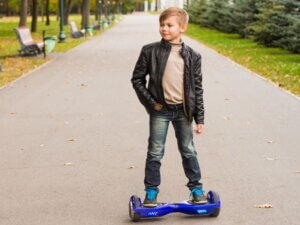HOVERBOARD AND OTHER TOYS CAN CAUSE INJURY TO CHILDREN
There have been many reports recently of people being injured on a Hoverboard. One of our children recently purchased a Hoverboard, so we appreciate the danger. However, Hoverboards are not the only toy that can cause injury. There have been many cases where a defective toy or other product has injured a child. Our lawyers represent families where a child is injured by a toy, or at school, at a daycare, in a car accident, etc.
A recent article in Medical News Today reported that last year, about 252,000 children were treated in emergency rooms for toy-related injuries. According to the Consumer Product Safety Commission (CPSC); 70% of those hurt were aged 12 and younger. The organization World Against Toys Causing Harm (WATCH), reported 50 U.S. children died in one three-year period. Recent statistics, they say, ’emphasize that dangerous toys continue to pose a year-round threat.’
Here is an excerpt from the Medical News Today article and their recommendations:
Buy age-appropriate toys to avoid injury

Different toys are appropriate for different ages, abilities, skills, and interest levels. Toys that are too advanced may be unsafe for younger children. Most toys include age-appropriate guidelines and hazard warnings. Therefore, labels should be checked before letting your child use the toy.
Toys should be big enough not to fit into a small child’s mouth.
The National Association for the Education of Young Children (NAEYC) recommends the following toys for children up to 6 years.
Infants from 0-6 months need things they can reach for, hold, suck on, shake, or make noise with. Examples include rattles, large rings, squeeze toys, teething toys, soft dolls, and textured balls. There are also interactive books. They can listen to lullabies and simple songs and look at pictures of faces; unbreakable mirrors are also suitable.
From 7-12 months, infants like baby dolls, puppets, plastic and wood vehicles with wheels, and water toys. Also, items to drop and take out, such as plastic bowls, balls, nesting toys, large soft blocks and wooden cubes.
For large muscle development, there are large balls, push and pull toys, and low, soft things to crawl over. Anything that can fit entirely into the child’s mouth is not appropriate.
One-year-olds enjoy looking at board books with pictures and listening to songs, rhymes, and simple stories. They can be creative with wide, nontoxic, washable markers, crayons, and large paper.
Fast facts about toy-related accidents
- In 2013, 61,000 children under 15 were injured on non-motorized scooters.
- 20,700 injuries were caused by balls.
- 13,500 were injured when playing with dolls and plush toys.
Pretend play can involve toy phones, dolls and accessories, plastic and wood animals and vehicles. The child can build with cardboard and wood blocks 2-4 inches in size; and use balls for physical development. Battery compartments should be securely screwed down and inaccessible.
Children around 2 years have some sense of danger but also do a lot of physical ‘testing.’ This includes jumping from heights, climbing, hanging by their arms, rolling and rough-and-tumble play.
Suitable toys include large-piece wood puzzles, large bricks that snap together, and hammering toys. Also, water play toys, large chalk and small but sturdy transportation toys. Tricycles may not be safe before the age of 3 years, but tunnels and low climbers with soft mats are good.
At 3-6 years, appropriate toys include puzzles with more and smaller pieces and smaller building blocks that snap together. Children that age can also use tricycles, dress-up sets, balls, large and small crayons and paper. Preschool scissors and glue can help to keep the activities safe.
If younger children are around while the older ones play with small pieces, the parents should be especially watchful.
Insist on head protection for your child
Bikes, skateboards, scooters and other riding equipment are popular gifts, but they must be accompanied by a helmet. Children sometimes resist wearing a helmet; make them wear it anyway.
Dr. Lane told MNT that she expects the most common toy-related injuries in children at this time of year will probably relate to big toys. Most common are scooters, bikes, skates, inline skates and so on. These toys must be used in a safe manner and environment, under parental supervision; and with the child wearing a helmet.
She added that most injuries and deaths involve non-motorized riding toys, frequently between non-motorized scooters and a motor vehicle.
